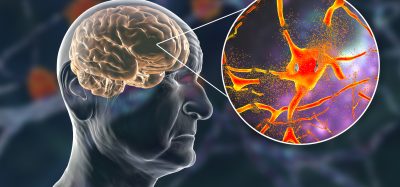Vitamin A and its role in psychiatric and other disorders
Posted: 19 March 2024 | Dr Murray Cairns (University of Newcastle), Ellen Capon (Drug Target Review) | No comments yet
In this Q&A, Dr Murray Cairns, NHMRC Leadership Research Fellow at the University of Newcastle, shares his insights about the genetic influences on circulating retinol, and explains how a retinol polygenic score could be utilised in a precision medicine approach.


Could you describe the potential link between vitamin A levels and altered neuronal connectivity in psychiatric disorders?
Vitamin A (retinol and all trans-retinoic acid) is important for brain development because it triggers the differentiation of neural progenitor cells into mature neurons with a complex dendritic arborisation (tree) with many connections with other neurons that collectively form the neural network that organises behaviour. Because of this key role, vitamin A has been hypothesised to be involved in psychiatric conditions, such as schizophrenia. While there has been some epidemiological support for vitamin A or deficiency in observational studies, we supported this role for the vitamin in schizophrenia using genetic approaches back in 2020. In the current study undertaken by an international team of researchers, co-led by Dr William Reay, we used the genetics of retinol itself as a way to proxy its effect in thousands of traits, including brain structure, vision, and the immune system through causal modelling.
Beyond the main retinol transport complex, what were some of the novel retinol-associated genes identified, and what biological processes are they related to?
The novel association signals mapped closely to GCKR, TFCP2L, FOXP2, MAF, MAFB and PPP1R3B. These genes have a broad range of function including gene regulation particularly in relation to the metabolism of sugars, lipids, and mitochondrial function (among other pathways). A unifying feature is their expression in the liver which is important for retinol biosynthesis.
What factors were found to potentially influence circulating retinol levels?
All these factors are likely to have a significant influence on circulating retinol level, however, the Retinol Binding Protein 4 gene (RBP4) and Transthyretin gene (TTR) have the strongest genetic signal, hence they were observed previously with a smaller sample size. These also make sense from a biochemical perspective.
What distinguishes the approach of using genetic variation influencing retinol levels in large genetic studies from traditional observational studies when studying its impact on various health conditions?
Traditional observational studies have a number of drawbacks. Firstly, it’s difficult to discriminate between causation and correlation. If vitamin A level is only correlated with a health condition, it is unlikely to have any therapeutic value, whereas if it is causal, the molecule could have therapeutic utility. Secondly, it’s difficult to separate causation from reverse causation. In other words, a disease state may cause a change in vitamin A levels rather than the vitamin A levels causing a change in disease state. Again, in this circumstance adding the vitamin will not help therapeutically with the disease state. Finally, observation studies are typically underpowered because you need to analyse the subject molecule (in this case retinol) in hundreds of people for each condition of interest. This is difficult to accomplish especially for molecules that need highly specialised analytical methods. By using causal modelling from genetically proxied retinol we were able to observe the impact of retinol in tens of thousands of people for nearly twenty thousand traits and diseases.
How could the retinol polygenic score identified in the study be utilised, and what implications does it have for individuals outside the normative range of circulating retinol levels?
As we now have good evidence for the role of vitamin A in disease through causal modelling, we can now put the vitamin and synthetic analogues to work more specifically in this condition but would this benefit everyone with the condition? The answer is no because there are both genetic and dietary (environmental) causes for low vitamin A. Our polygenic score will enable the application of these treatments to people that specifically need it through precision medicine by identifying the individual at high genetic risk of low circulating levels of the vitamin. This is also important considering that too much of the vitamin can also be harmful, particularly to the developing foetus and therefore supplements and retinoid drugs should only be given under medical supervision, especially in women of childbearing age.
This study by Reay and colleagues was published in Nature Communications.
About the author


Professor Murray Cairns is an NHMRC Leadership Research Fellow at the University of Newcastle’s College of Health, Medicine and Wellbeing. He is the head of the Precision Medicine Laboratory in the School of Biomedical Sciences and Pharmacy, which comprises a team of postdoctoral fellows, research assistants, bioinformaticians and research higher degree students. Murray is also leading the HMRI Precision Medicine Research Program and is the CEO of PolygenRx.
Murray has used his expertise in bioinformatics to establish an internationally recognised laboratory specialising in complex trait genomics. He is a leader in genetically informed precision medicine and is developing transformative approaches to address the problem of heterogeneity in the treatment of complex disorders.
Murray’s previous appointments have included:
- Industry postdoctoral position with Johnson & Johnson Research
- Nucleics, Sydney – Senior Scientist
- Schizophrenia Research Institute, Newcastle – Senior Research Fellow
Murray is collaborating with international colleagues and other research laboratories to drive the discovery of genetic variations associated with various psychiatric and neurological disorders.
As evidence of his success, Murray has been awarded over $24 million in research grants and has published over 200 manuscripts, filed 24 patent applications and supervised more than 30 Research Higher Degree students.
Related topics
Genetic Analysis, Neurosciences, Precision Medicine
Related conditions
psychiatric disorders
Related organisations
University of Newcastle







